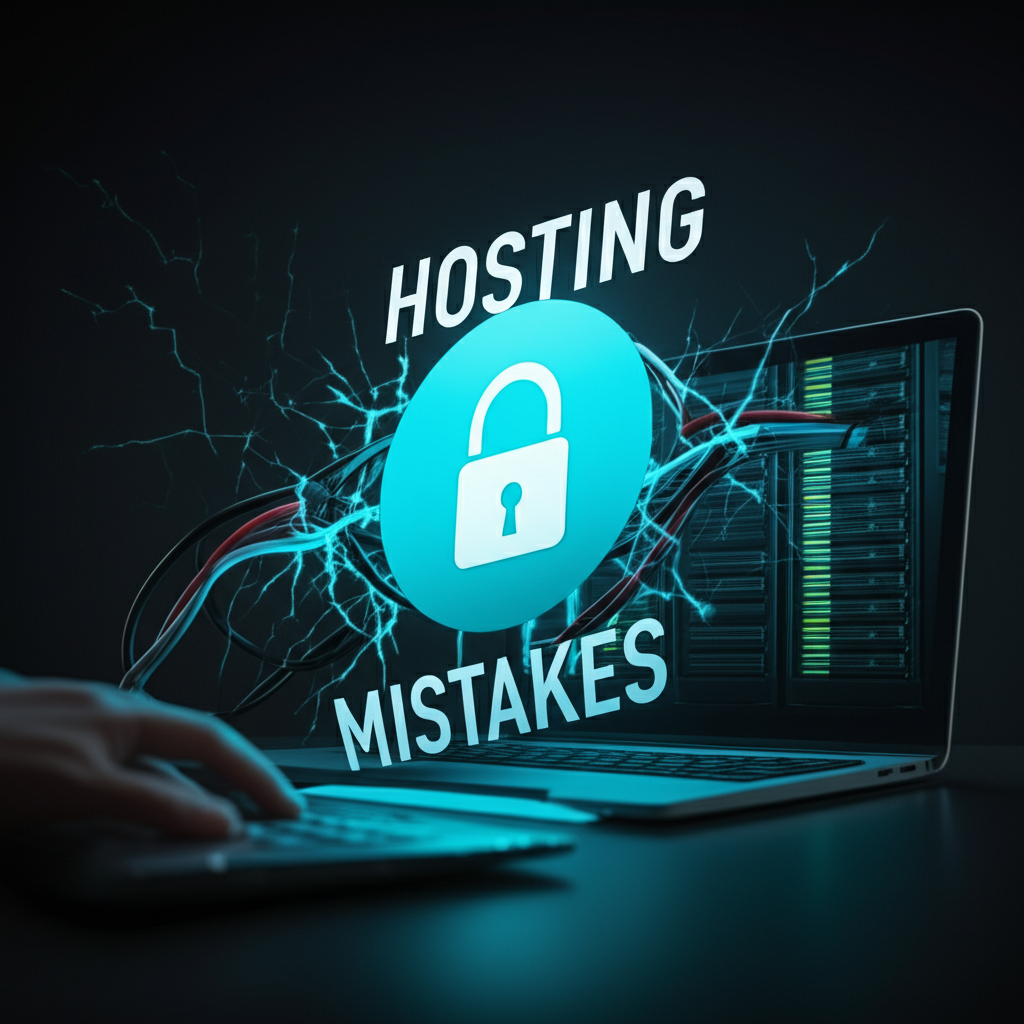- Common Hosting Mistakes That Can Cost You
- More Hosting Mistakes to Steer Clear Of
- Neglecting Performance Optimization:
- Failing to Monitor Website Performance:
- Overlooking Backups:
- Not Utilizing a Staging Environment:
- Preventing Future Hosting Headaches
- Ignoring Customer Support Reviews:
- Not Reading the Fine Print:
- Failing to Plan for Scalability:
- Sticking with a Bad Host:
Hosting Mistakes: Avoid These 10 Costly Errors
Hosting mistakes can severely impact your website’s performance, security, and ultimately, your bottom line. Choosing the right web hosting and managing it effectively is crucial for online success. From neglecting security measures to picking the wrong hosting plan, seemingly small oversights can lead to significant problems down the road. This article will explore ten common hosting mistakes and provide practical advice on how to avoid them, ensuring your website runs smoothly and efficiently.
Common Hosting Mistakes That Can Cost You

One of the most frequent hosting mistakes is choosing the wrong hosting plan. Opting for a shared hosting plan when your website requires the resources of a dedicated server, or vice versa, can lead to performance issues and frustrated visitors. Shared hosting, while cost-effective for smaller sites, can become a bottleneck as your website grows. Conversely, investing in a powerful dedicated server when a VPS would suffice is an unnecessary expense. Carefully assess your website’s needs, considering factors like traffic volume, storage requirements, and resource usage, to select the most appropriate plan.
Another critical error is ignoring website security. Failing to implement robust security measures leaves your website vulnerable to cyberattacks, data breaches, and malware infections. Regularly updating your software, using strong passwords, and installing security plugins are essential steps in protecting your website from threats. Consider implementing two-factor authentication and regularly backing up your data to further enhance security.
More Hosting Mistakes to Steer Clear Of
Beyond choosing the right plan and prioritizing security, several other hosting mistakes can negatively impact your website. These include:
Neglecting Performance Optimization:
Slow loading times can drive visitors away and negatively impact search engine rankings. Optimize your website’s performance by leveraging caching, optimizing images, and minimizing HTTP requests. Content Delivery Networks (CDNs) can also significantly improve loading speeds, especially for geographically dispersed audiences.
Failing to Monitor Website Performance:
Regularly monitor your website’s uptime, loading speed, and resource usage to identify and address potential issues proactively. Utilize website monitoring tools to receive alerts about downtime or performance degradation, allowing you to take swift action to minimize disruptions.
Overlooking Backups:
Data loss can be devastating. Regularly backing up your website’s files and databases is essential to ensure you can quickly recover from hardware failures, software errors, or cyberattacks. Implement automated backups and store them securely in a separate location.
Not Utilizing a Staging Environment:
Testing changes on a live website can lead to unexpected errors and downtime. A staging environment allows you to experiment with new features, themes, and plugins without impacting your live site. Implement changes on the staging server first, thoroughly test them, and then deploy them to the live website.
Preventing Future Hosting Headaches
Understanding common hosting mistakes and proactively implementing preventative measures can save you time, money, and frustration in the long run. Consider these additional points:
Ignoring Customer Support Reviews:
Before committing to a hosting provider, research their customer support reputation. Read reviews and testimonials to gauge their responsiveness and helpfulness. A reliable support team can be invaluable when you encounter technical issues or require assistance.
Not Reading the Fine Print:
Carefully review the hosting provider’s terms of service, including their refund policy, acceptable use policy, and resource limitations. Understanding the terms and conditions will help you avoid surprises and potential conflicts down the road.
Failing to Plan for Scalability:
As your website grows, its hosting needs will evolve. Choose a hosting provider that offers scalable solutions, allowing you to easily upgrade your resources as your traffic and storage requirements increase.
Sticking with a Bad Host:
If your current hosting provider consistently fails to meet your needs, don’t hesitate to switch. Migrating your website to a new host might seem daunting, but the long-term benefits of improved performance, reliability, and support often outweigh the initial effort.
By avoiding these common hosting mistakes and implementing the recommended best practices, you can ensure your website remains secure, performs optimally, and delivers a positive experience for your visitors. Choosing the right hosting plan, prioritizing security, and actively monitoring your website’s performance are key factors in achieving online success.











Leave a Reply